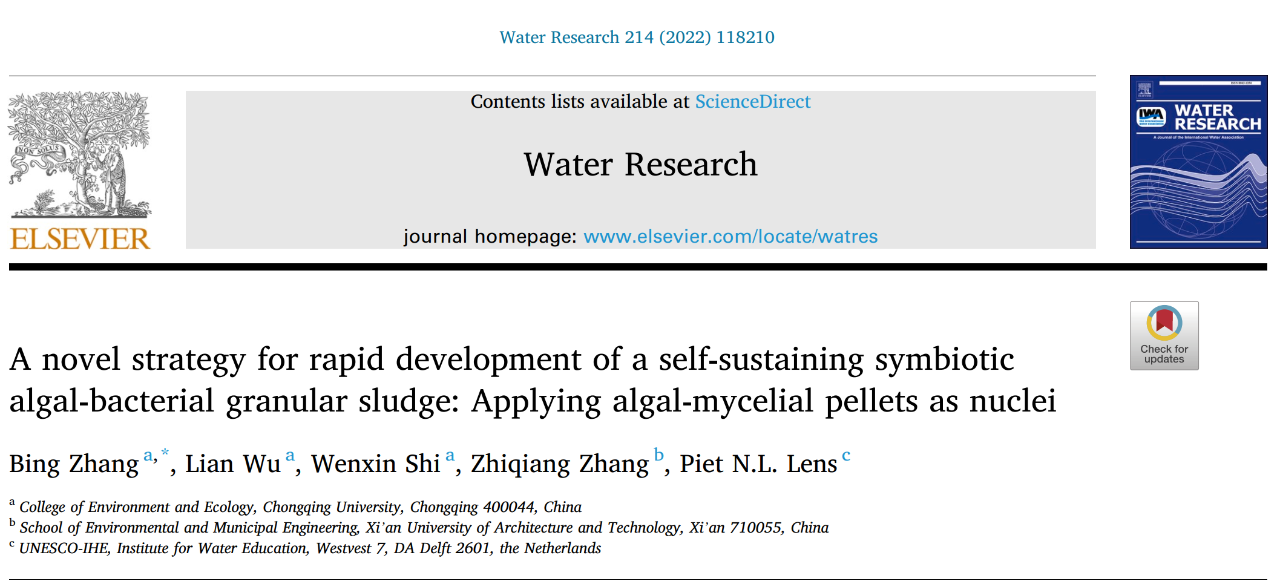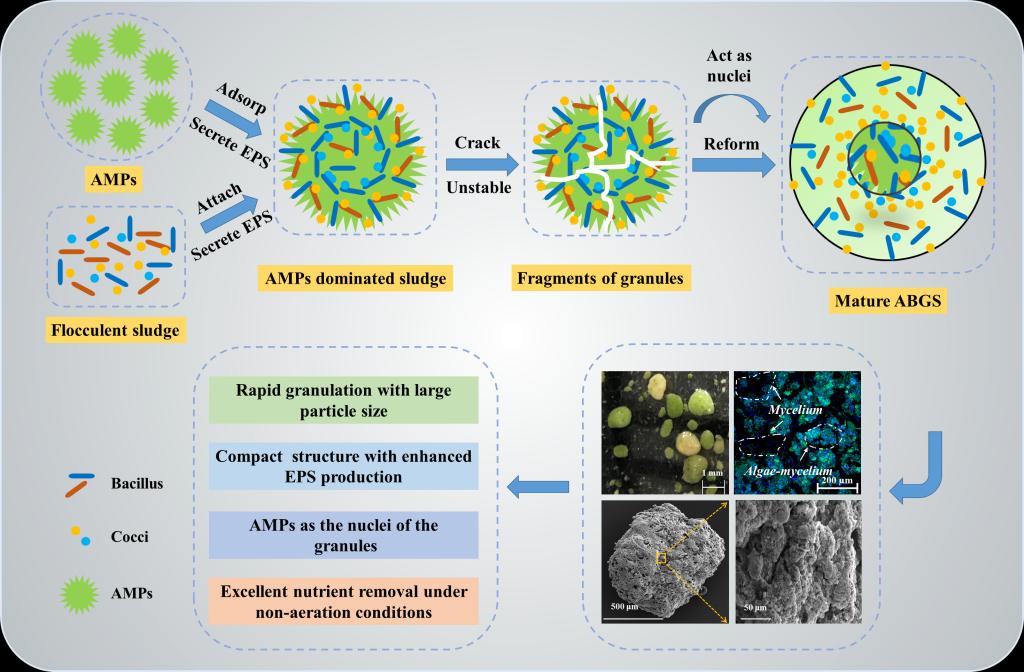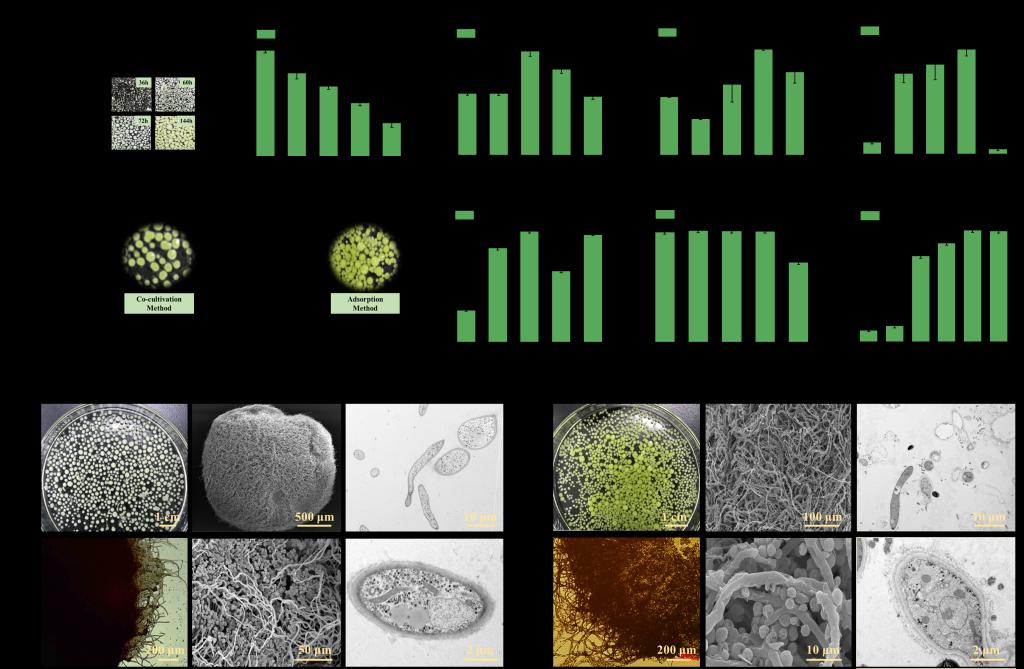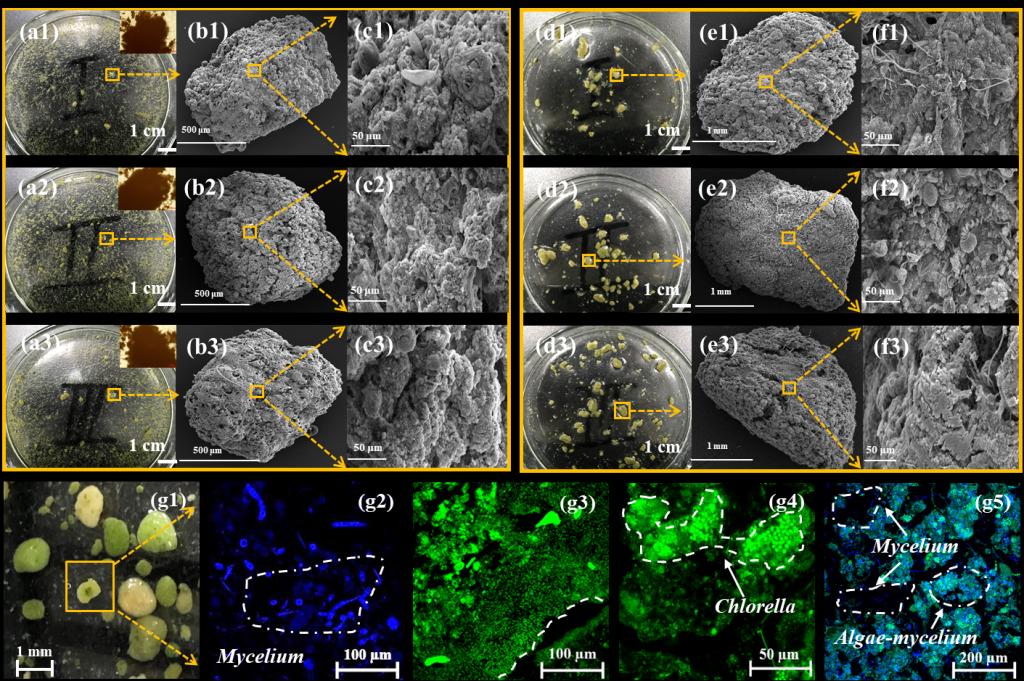2022-04-07 15:50:57
Professor SHI Wenxin’s team from the College of Environment and Ecology, has newly published a study on algal-bacterial granular sludge (ABGS) inWater Research, a top academic journal in the field of environment. In this study, a novel strategy was proposed by applying the algal-mycelial pellets (AMPs) as the primary nuclei for accelerating the development of a self-sustaining symbiotic ABGS system. The inherent mechanism for the rapid development of ABGS by adding AMPs was revealed. This study provides an economic and feasible new method to enhance the rapid cultivation and system stability of ABGS under non-aeration conditions.
https://www.sciencedirect.com/science/article/abs/pii/S0043135422001737

Graphic Abstract

Abstract
Algal-bacterial granular sludge (ABGS) is a promising technology for wastewater treatment, benefiting from the synergetic interactions between algae and bacteria. However, the rapid start-up of the ABGS system is not trivial. Herein, a novel strategy was proposed by applying the algal-mycelial pellets (AMPs) as the primary nuclei for accelerating the development of a self-sustaining symbiotic ABGS system. The results indicated that by using this strategy complete granulation was shortened to 12 days, much shorter than the control system without AMPs dosage (28 days). The ABGS had a large particle diameter (3.3 mm), compact granular structure (1.0253 g/mL), and excellent settleability (SVI30of 53.2 mL/g). Moreover, 98.6% of COD, 80.8% of TN and 80.0% of PO43--P were removed by the ABGS.The nuclei of targeted algae (Chlorella) and filamentous fungi (Aspergillus niger), the enhanced production of extracellular polymeric substances (especially proteins) and the enrichment of functional bacteria (such asNeomegalonemaandFlavobacterium) facilitated the granules development.The low surface free energy (-69.56 mJ/m2)and energy barrier(89.93 KT)were the inherent mechanisms forthe strong surface hydrophobicity, the easy bacterialadhesion, and the short granulation period. This study providesan economically feasible approach toaccelerate ABGS granulationand sustain system stability.
Aims
This work aimed to investigatethe feasibility of utilizing AMPs as the primary nuclei for rapid start-up of a self-sustaining ABGSsystem with respect to (i) key parameter optimization for AMPs biosynthesis, ii) the granulation process and synergistic algal-bacterial bioconversions in the ABGS system, (iii) characteristics of the micro-morphology, extracellular polymeric substance (EPS), and community structure dynamics (bacteria, algae and fungi) of the ABGS, (iv) the surface interaction energy of granular sludge cells and sludge aggregation capacity based on the extended Derjaguin-Landau-Verwey-Overbeek (XDLVO) theory, and (v) practical implication of this study. The results provide a novel and economically feasible strategy to tackle the long start-up of ABGS systems, while shedding light on further engineering applications of ABGS for cost-effective and environmentally sustainablemunicipal wastewater treatment.

Fig. Growth curve of MPs (inserted figure: representative images of MPs during the formation process) (a), the effects of inoculation spores density (b), pH (c), rotary speed (d), and temperature (e) on the formation of MPs. Variations of absorbance with time by using co-cultivation method (f) and adsorption method (g). The effects of the MPs cultivation period (h), dosage of algal cells (i), and dosage of MPs (j) on the formation of AMPs. Digital photographs, SEM and TEM images of MPs (k) and AMPs (l)

Fig. Digital and SEM images of ABGS collected from R1 (a1-c1 and d1-f1), R2 (a2-c2 and d2-f2), and R3 (a3-c3 and d3-f3) on days 16 and 32, respectively
A novel strategy by using AMPs as nuclei was proposed with the purpose to accelerate the development of a self-sustaining symbiotic ABGS. The results showed that the ABGS was rapidly developed within 12 days, with large particle size, compact structure and excellent settling property, high bioactivity, and satisfactory nutrient removal efficiency.The fungus (Aspergillus) with the targeted algae (Chlorella) acted as the granule nuclei, the reinforced secretion of tryptophan and aromatic protein as well as the enrichment of functional bacteria (such asNeomegalonemaandFlavobacterium) contributed to the rapid granulation of ABGS. The surface free energy of ABGS indicated that the repulsive barrier between microorganisms was significantly decreased, which was the inherent mechanism for the readily bacterial aggregation. Overall, this study provided a cost-efficient and practically feasible approach to accelerate the development of a self-sustaining symbiotic ABGS.
Download: ![]() WR-2022 SHIWENXIN.pdf
WR-2022 SHIWENXIN.pdf